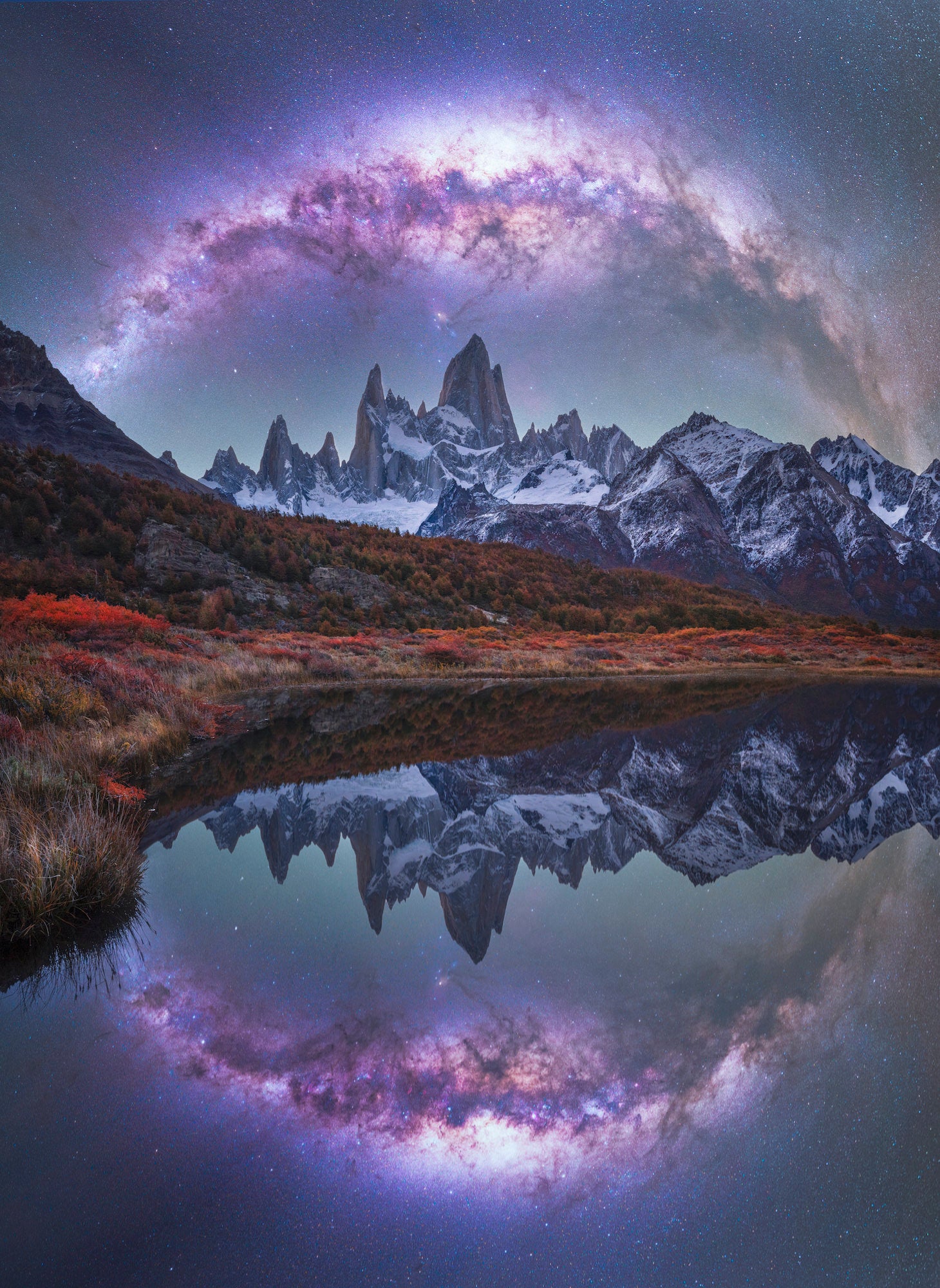Brandt Ryder (@brandtryderphotography) has been obsessed with the night sky for as long as he can remember. He grew up with dreams of becoming an astronaut, but is an ecologist by day with aspirations to do photography full time teaching others about the craft. In 2018, he began looking for outlets to counterbalance the analytical left side of his brain. Photography was the perfect outlet as he could embrace the formulaic elements of capturing photographs while creatively expressing the world through his own lens. “Astrophotography offered so many unique challenges for me physically and mentally and most importantly it regularly gets me out of comfort zone and back under the stars of my childhood dreams. Sitting under the stars creates this incredible perspective in life and it reminds us how infinitesimally small we are in the grand scale of the universe” he says. As Brandt’s love of astrophotography grew he was continually seeking new challenges and more remote places to explore his new found passion. We came across this image of his on Instagram and connected with him to learn more about the story behind the composite that he made with a full-frame Sony Alpha camera and a pair of wide-angle Sony G Master primes.
Product Preview – In This Article You'll Find:
–Sony Alpha 7 IV
–Sony 14mm f/1.8 G Master
–Sony 24mm f/1.4 G Master

Photo by Brandt Ryder. Sky & Reflection: Sony Alpha 7 IV. Sony 14mm f/1.8 G Master. 60-sec. X2 stacked, ISO 1600. Ground: Sony Alpha 7 IV. Sony 24mm f/1.4 G Master. 3.2-sec., f/13, ISO 400
Driven By A "Dream Shot"
Having spent nearly two decades working in the Amazon Basin of South American for ecological research, Brandt always had aspirations to visit the far southern reaches of the continent to explore Patagonia. Finally, last April Brandt made this longtime dream come true with a vow to capture some of the most unique night sky images ever take in the southern hemisphere. Brandt chose to visit Chile and Argentina with one particular “dream shot” driving him. “All I really wanted was to capture the arching Milky Way over the iconic Mount Fitzroy, but like so many things in life, little did I realize the challenges that awaited me,” he says.
The southern Andes are notorious for their extreme wind and highly temperamental weather.“You can literally have three seasons in a day in the Argentinian Patagonia and I had no clue if I would even see the stars during my trip” he lamented. Knowing the challenges, Brandt set out to El Chalten, Argentina last April to chase the vibrant fall color of Nothofagus Beech trees, some of the darkest skies on the planet, and of course Mount Fitzroy.
Using A Pair Of G Master Primes To Create The Panorama
To capture the image Brandt pushed himself and his Sony gear to the limit in extremes of Patagonia. “Over the course of the 10 days I walked over 90 miles carrying nearly 50 pounds of camera gear searching for the perfect composition," he explains. "When I found the pools with the Mount Fitzroy reflecting and the Milky Way arching overhead in the early morning, I knew I had something magical."
Brandt brought two Sony Alpha 7 IV camera bodies, one of which has been astromodified.“Astromodifying cameras removes the high pass filter and installs a red sensitive filter or H-Alpha filter to better capture the red wavelengths of light predominant in celestial objects." He paired his Sony Alpha 7 IV cameras with his two go-to G Master primes – the Sony 24mm f/1.4 G Master and the Sony 14mm f/1.8 G Master. Brandt also carried with him a star tracker and solid tripod to get longer exposures of the stars while compensating for the rotation of the earth.
To create this shot, Brandt spent hours in freezing temperatures tracking the stars to create a multi-shot vertical stacked panorama (10 images total) at 14mm. Brandt then focal length blended his Milky Way panorama with a multi-shot 24mm vertical panorama of Mount Fitzroy. “I was not only graced with clear brilliant night skies," he says, "but I was also lucky to have almost no wind enabling longer exposures with pin point sharp stars. The images straight out of camera were literally jaw-dropping."
Putting Creativity Into The Composite
“A huge part of compositional photography is getting great images in done in the field, but in my experience the creative art of photography is in post-processing," Brandt explains. "Little did I know this image would be the single hardest one I have ever edited taking a total of 10 hours to complete.”
Brandt faced several challenges in creating the final vision. The first was stacking and stitching the huge Milky Way panorama. Unlike the Northern hemisphere where the Milky Way is relatively close to the horizon, the core of the galaxy is higher in the sky in Patagonia at this time of year and alignment is very close to nautical twilight when the rising sun is approaching the horizon. As a result, imaging stitching software lacks the horizon as a “point of reference”.
Second, Brandt had intended to do a multi-row panorama, but because of technical challenges with his tracker in the cold and the approaching dawn he was unable to capture star images in the bottom row of his panorama. “As a result, I had to bring the Milky Way closer to the horizon line of Mount Fitzroy making this image a composite. Although I try to stay as true natural conditions, there are times when executing a creative vision is important and empowering. I do truly believe art is in the eye of the beholder.”
Finally, Brandt had to deal with scaling his different focal length images to match and line up. Brandt used Lightroom, Photoshop, Starry Landscape Stacker, PTGui, AstroPanel X Pro, Raya Pro and Nik collection software to create the final image.
See more of Brandt Ryder's work on Instagram @brandtryderphotography.



